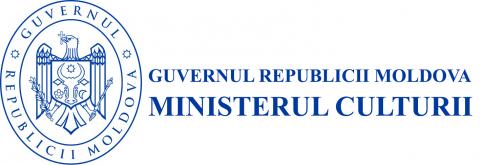VI. KNOWLEDGE, PRACTICES, REPRESENTATIONS AND SYMBOLS ABOUT MAN, NATURE AND COSMOS
Natalia GRĂDINARU
Maria CIOCANU
Knowledge represents one of the first stage values in the culture of any society. Achieving knowledge about man, nature, cosmos, their assimilation and transmission to the next generations is a rather complex and difficult process for traditional societies whose intangible cultural heritage we inherit. Difficulties are caused, on one hand, by the development of rational thinking in the context of mythical, symbolical thinking, and on the other hand by the rather difficult social, historic, geographic conditions. To appreciate correctly the long trace of development, we should note that in the traditional society human existence is conceived as inseparable from that of the natural medium. The person is wholly integrated in the family and community; people perceive the world and cosmos affectively and sensibly. In spite of these troubles, the knowledge of our ancestors was considerable.
Achieved in the process of adaptation of man to the natural and social medium, it (knowledge) concerns all the spheres of human activity. Knowledge was accumulated, verified and accredited in human practice along centuries, being orally transmitted from one generation to another. The division of labor led to the necessity to reproduce the knowledge accumulated by society, to pass it to specialized people. Communities had understood the importance of achieving knowledge by learning and created conditions in order to assure the achievement of knowledge and skills from experts to followers. Knowledge about the proprieties of plants, animals, water, air, earth and its riches, facilitated to people the acquisition of food, shelter, clothes, weapons, helped them maintain the continuity of the genus. Knowing the human body, its functions and sufferings, contributed to the cultivation of respect towards life, the latter being appreciated as the supreme human value. While discovering the proprieties of time, space, cosmos, these were used for the articulation of social life, for improving labor conditions for people, and for achieving new knowledge.
These social skills are very important even nowadays, because they are the proof of a deep knowledge of nature, reflect the reasonable attitude of communities towards the medium they live in, they highlight the way how human thought evolved in these regions, show the long path of knowledge until it became a social value for everyone.
Each domain had its experts who possessed mysteries of knowledge. Healers, quacks, wizards knew the therapeutic qualities of plants, minerals and animal products and also the mysteries of human body. Midwives possessed knowledge about human birth and death. This is why, although people respected them because they assisted births, midwives were also feared as ones who operated at the border between life and death. Another category of initiates were old persons who accumulated during their life plenty of knowledge about the plant and animal world, about calendar and also about cosmos. The others learned from them and completed knowledge with new observations or discoveries. But in most of the cases, learning took place in family, a fact that contributed to the extent of knowledge of the initiates and to their specialization in certain fields. By means of the collective memory, this knowledge reached present time.
We shall present in this compartment the principal domains of knowledge having in their center man, nature and cosmos.
Knowledge from the field of traditional medicine
VI.1. "Descântatul" (charms) as a complex psycho-therapeutic form, based on the therapy of speech which unites, in practice, several methods of healing: phyto-therapeutic, psycho-hypnotic (magic), bioenergetical.
VI.2. Usage of medicinal plants in the context of phito-therapy, along with knowledge about their cultivation in spontaneous nature or their cultivation by man, the calendar of collecting plants, receipts of preparing them in order to preserve their therapeutic proprieties.
VI.3. Hydrotherapeutic methods of healing based on using water inside and outside, aiming to purify and clean the organism, fortify the immune system, prevent and prophylaxis of pathological processes.
VI.4. Methods of traditional orthopedics, together with knowledge of the initiates about mending bones.
VI.5. Knowledge and practices of traditional surgery, together with the instruments and receipts of remedies used for healing diseases with surgery interventions.
VI.6. Knowledge and practices of using fire and heat, cold and ice in the control and healing of diseases.
VI.7. Knowledge and practice of using remedies of animal origin, mineral, chemical ones, in the control and healing of diseases.
VI.8. Traditional methods of preventing and control diseases, used in aromatherapy.
VI.9. Knowledge and practices of traditional midwifery, as a necessity to assist human birth, together with the applied instruments and remedies.
VI.10. Knowledge and practices of assisting the birth of animals, together with the applied instruments and remedies.
VI.11. Knowledge and practices concerning the prevention, control and healing of animal diseases.
(see Traditions and Expressions of Verbal Art, having Language and Word Meaning as main Vehicle for Cultural Expression; Celebrations, Customs and Rites; Knowledge regarding Traditional Alimentation; Techniques and Knowledge concerning Traditional Craftsmanship).
Knowledge about measure unities
VI. 12. Units for measuring time, together with the afferent objects and practices.
VI. 13. Units for measuring earth, together with the afferent objects and practices.
VI. 14. Units for measuring liquids, together with the afferent objects and practices.
VI.15. Units for measuring cereals, together with the afferent objects and practices.
VI.16. Units for measuring raw material used for weaving and textures, together with the afferent objects and practices.
VI. 17. Units for measuring weights, together with the afferent objects and practices.
VI.18. Units for measuring metals and precious stones.
Knowledge about using the force of water and wind
VI.19. Practices of catching drinking water in the form of streams and wells. VI.20. Practices of catching and using waters for the function of water-mills. VI.21. Practices of catching the wind for the usage of wind mills.
VI.22. Practices of catching and using the force of draft animals for the function of subterranean mills.
Knowledge about weather signs
VI.23. Signs that predict how each season will be.
VI.24. Signs that predict the change of weather.
VI.25. Signs that predict earthquakes.
VI.26. Signs that predict storms.
Knowledge about celestial stars
VI.27. Knowledge about states of the sun and their impact on world, cosmos.
VI.28. Knowledge about the states of the moon and their impact on world, cosmos.
VI.29. Knowledge about the position of constellations at different hours of night and during different seasons, in order to fix temporal and geographical marks.
VI. 30. Popular books about cosmic phenomena and about human life.
VI. 31. Marginal inscriptions on old books, concerning sun and moon eclipses, earthquakes, floods and other exceptional phenomena.
(see Traditions and Expressions of Verbal Art, having Language and Word Meaning as main Vehicle for Cultural Expression; Traditions and Expressions of the Musical Practice or Art; Traditional Musical Instruments; Traditions and Expressions of Choreographic Art or Practice; Celebrations, Customs and Rites; Knowledge regarding Traditional Alimentation; Techniques and Knowledge concerning Traditional Craftsmanship).
Selective bibliography:
- Bâzgu, Eugen, Ursu, Mihai. Cultul fântânii şi al izvorului [Cult of the well and stream] // Resursele acvatice ale Republicii Moldova. Fântâni şi izvoare [Water resources of the Republic of Moldova. Wells and streams], Chişinău: Ştiinţa, 2008.
- Bernea, Ernest. Cadre ale gândirii populare româneşti. Contribuţii la reprezentarea spaţiului, timpului şi cauzalităţii [Frames of the Romanian folk thought. Contributions to the representation of space, time and causality]. Bucureşti, 1985.
- Boza Ion. Plante – izvor de sănătate [Plants – a source of health]. Chişinău, 1993.
- Brăescu, I. Măsurarea pământului la români din vechime până la punerea în aplicare a sistemului metric [Measuring land among the Romanians from old times until the implementation of the metrical system] //Buletinul Societăţii regale române de geografie [Bulletin of the Romanian royal geographical society], XXXIV, 1913, p.66-137.
- Candrea I.-Aurel. Folclor medical român comparat: privire generală. Medicina magică [Romanian compared medical folklore. Magic medicine]. Bucureşti: Casa şcoalelor, 1944.
- Colectarea plantelor medicinale [Collecting medical plants], Chişinău, 1971.
- Constantinescu Ol, Stoian I. Din datina Basarabiei: materialul adunat de elevii şcoalei normale de băieţi [From the Bessarabian customs: materials collected by the pupils of the boys’ normal school]. Chişinău. Monitorul Oficial şi Imprimeriile Statului, 1936.
- Cristescu Ştefania, Descântatul în Cornova-Basarabia [Descantat/Spell-making in Cornova-Bessarabia], Bucureşti: Paideia, 2003.
- Curuci L. Folclor al medicinii populare vechi [Folklore of the old folk medicine]. // Folclor din stepa Bălţilor [Folklore from the Balti steppe]. Chişinău: Ştiinţa, 1989.
- Curuci L. Din folclorul medicinii populare inventive [From the folklore of traditional inventive medicine]. // Folclor din Câmpia Sorocii [Folklore from the Soroca field]. Chişinău: Ştiinţa, 1989.
- Găluşcă Tatiana. Folclor basarabean adunat din judeţele Soroca, Bălţi, Orhei [Bessarabian folklore collected from the districts of Soroca, Balti, Orhei]. V.1. Bălţi. Cartea Noastră, 1938; V2 - Bălţi. Cuget Moldovenesc, 1938.
- Gorovei A. Descântecele românilor. Studiu de folclor [Romanian spells/descantece. Folklore study]. Bucureşti, 1931.
- Graur A. Descântecul la români: istorie şi actualitate [Descantecul/spells among the Romanians: history and actuality]. Chişinău, 2004.
- Moisei, Antonie, Cehovski, Igor. Apa in riturile magice ale romanilor din zona Prutului de Sus [Water in the magical rites of the Romanians from the zone of Superior Prut]. Glasul Bucovinei [Voice of Bucovina] (Cernăuţi – Bucureşti), 2000. Nr. 4.
- Natura şi sănătatea în tradiţiile populare [Nature and health in the folkloric traditions], Chişinău, 2007.
- Pavelescu Gh. Magia la romani: studii si cercetări despre magie, descântece si mana [Magic among the Romanians: studies and researches about magic, spells and mana]. Bucureşti: Minerva, 1998.
- Ţăranu P. Apa sub spectrul manifestărilor magico-mitice [Water in the perspective of magical-mythical manifestations] // Limba Romana [Romanian Language] (Chişinău). 2002. Nr. 11-12.
- Răuţă A. Plante medicinale româneşti [Romanian medicinal plants]. Bucureşti, 1939.
- Florea V. Plantele medicinale [Medicinal plants], Chişinău, 1982.
- Moraru, Sergiu. Descântece, vrăji, farmece şi practici magice [Descantece, spells, charms and magical practices] // Folclor din ţara fagilor [Foklore from the land of beech trees]. Chişinău: Hyperion, 1993.
- Nemirovschi E. Din comorile sufletului basarabean: materialul didactic folcloristic adunat de eleve sub îndrumarea profesoarei... [From the treasures of the Bessarabian soul: didactical-folkloric material collected by pupils under the guidance of teacher…] Chişinău, 1936.
- Romanciuc-Dutcovschi L. Folclor din părţile Ialovenilor [Folklore from the region of Ialoveni]. Chişinău: Arc, 1995.
- Sănătatea în relaţie cu mediul [Health in relationship to environment]. Chişinău, 1999.
- Ştefănucă Petre V. Folclor şi tradiţii populare [Foklore and folk traditions]. Alcătuire, studiu introductiv, bibliografie, comentarii şi note de G. Botezatu, şi A. Hâncu, vol. I, II. Chişinău: Ştiinţa, 1991.

